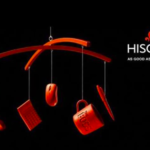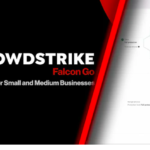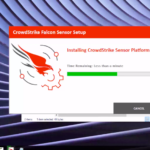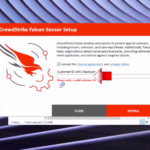Riding a motorcycle provides a sense of freedom and adventure that car drivers simply cannot experience. Many riders choose to customize their bikes with aftermarket parts to make them more unique and better suited to their riding style and needs. However, adding custom parts can affect your motorcycle insurance coverage if you don’t understand how it works. This article will explain motorcycle insurance coverage as it relates to custom parts so you can make informed decisions when modifying your bike.
How Motorcycle Insurance Works
Standard motorcycle insurance policies cover the factory stock motorcycle against collision, comprehensive, liability and other damages. Collision coverage pays for damage to your motorcycle if you are in an accident, regardless of fault. Comprehensive coverage is for damage to your bike that is not from a collision, like theft, vandalism or natural disasters. Liability coverage helps pay for damage or injuries you cause to others if you are at fault in an accident.
Insurance companies determine your premiums based on the year, make, model and engine size of your motorcycle. They calculate rates based on the value of a stock model. Any custom parts you add aftermarket will increase the value, and thus they should increase the coverage and premiums.
Adding Coverage for Custom Parts
Most standard motorcycle policies only cover OEM or Original Equipment Manufacturer parts. That means if you have an accident, any aftermarket parts damaged would not be covered. Here are a couple options to cover custom parts:
- Add Accessory Coverage Endorsement – Some insurance companies allow you to add an endorsement to your policy that will provide coverage for non-OEM parts up to a specified limit, usually $3,000-$5,000. You’ll need to specifically ask for this accessory coverage and pay a small additional premium. When filing a claim, you’ll need to provide receipts showing the value of your custom parts.
- Increase Coverage Limits – You can ask to increase the limits of your collision and comprehensive coverage to account for the added value of your accessories. This will increase your premiums, but ensure you are covered for the full value of your bike, including custom parts. Inform your agent of all parts you’ve added and provide receipts showing their worth.
- Get Separate Component Coverage – A few insurance companies offer separate coverage policies specifically for custom motorcycle parts. These will cover all non-OEM parts for theft, damage or replacement. Premiums are calculated based on the total value of your accessories. This is the best option if you have invested significantly in aftermarket parts.
- List Parts on Your Homeowners or Renters Insurance – You may be able to add custom accessories to your home or renters insurance to get coverage. Create a list of all parts and their values to submit to your agent. This provides broader coverage but won’t cover damage to parts while riding.
Tips for Insuring Custom Motorcycles
If you plan to customize your motorcycle, follow these tips to make sure you have adequate coverage:
- Inform your insurance company about any aftermarket parts you add, even minor ones like saddlebags or a windscreen. Being transparent allows them to adjust your policy.
- Keep detailed records of all parts purchased including receipts, part names, prices paid and serial numbers. This provides proof of value.
- Take photos of your motorcycle from all angles before modifying it to document the changes you make.
- Ask your agent to walk through your policy so you understand what is and isn’t covered in regards to accessories. Don’t assume you’re covered.
- Price coverage from several providers. Compare quotes on custom bike insurance specifically, as rates can vary widely.
- Consider getting appraisals for your motorcycle both before and after you customize it. This provides concrete evidence of the value increases.
- Remove valuable accessories like easily removable seats, saddlebags, sissy bars, etc. when parking your bike in public to deter theft.
- Review your policy any time you add or remove custom parts on your motorcycle, or at each renewal. Adjustments may be needed.
Common Aftermarket Parts Covered by Insurance
Some of the most common custom motorcycle parts that affect insurance are:
Custom Paint Job
- A custom paint job can significantly increase the value of your motorcycle depending on the detail and quality. These are covered under standard collision and comprehensive coverage based on receipts showing the cost.
Custom Wheels
- Aftermarket wheels, especially forged alloy versions, can be very expensive. Make sure they are insured to value through endorsements or increased limits if you want coverage.
Custom Exhaust System
- Complete aftermarket exhausts add performance and style. Insure them for the added value over stock exhausts. Header pipes are often stolen.
Custom Seats
- Seats are commonly customized for style and comfort. Ensure coverage either through a rider or explicitly with receipts. Easily removable seats should be stored securely.
Custom Handlebars
- Aftermarket handlebars change riding position and style. Cover the costs paid if damaged. Higher bars increases likelihood of bike falling over.
Custom Fenders
- Extended, wrapped or painted fenders alter looks but cost more if damaged and need replacement. Receipts prove value over stock fenders.
Custom Lighting
- Unique LED headlights, underglow kits, light bars all enhance style and visibility. Cover the added value to replace. Theft is common.
Windshields/Fairings
- Larger windshields or custom fairings aid wind protection but cost more to replace if damaged. Obtain endorsement or receipts.
Saddlebags/Luggage
- Hard saddlebags, sissy bar bags, and luggage racks provide storage and style. Cover the added value or risk big replacement costs.
How Claims Work on Custom Bikes
The specifics of how claims work when you have custom parts depends on your particular insurance policy. But in general:
- You’ll need to identify all damaged aftermarket parts and provide proof of their worth – either receipts or appraisals.
- The insurer will reimburse you the fair market value of damaged customizable parts at the time of loss, factoring in depreciation. You likely won’t get the full original cost back.
- If damage costs more to repair than the part’s value, insurers may declare it a total loss and pay out its insured value.
- Insurers have the right to replace custom parts with OEM parts if cheaper. You’ll receive the value difference.
- If you lack documentation for the value of a custom part, the insurer may only pay its base OEM value for replacement.
- Theft of custom parts may need a police report. Insurers want to confirm it wasn’t fraud or removed intentionally.
- Insurers may require damaged parts be available for inspection before paying claims.
- Policies may have deductibles applying separately to accessories that must be paid before coverage kicks in.
Tips for Lowering Insurance Premiums
While adding custom parts increases value, there are ways to help minimize the premium increases:
- Ask about discounts for safety gear, safety courses and anti-theft devices. These demonstrate lower risk.
- See if insurers offer lower rates for storing bikes in garages. Indoor parking lowers theft risk.
- Remove detachable accessories like seats and saddlebags when parking in public. Keep at home to reduce coverage needed.
- Bundle motorcycle insurance with other policies from the same provider, like home or auto insurance.
- Ask about discounts for insuring multiple motorcycles on one policy. This demonstrates you are an enthusiast.
- Inquire about lower pricing for low mileage riders or members of riding clubs, associations and charities. Limited miles means limited risk.
- Pick a higher deductible when choosing coverage levels. Higher deductibles equal lower premiums.
- Drop collision and comprehensive coverage on older bikes worth less than $1,000. It’s cheaper to self-insure bikes worth less than premiums.
- Enroll in defensive driving courses every few years to show insurers you are maintaining riding skills. Safer riders pay less.
In The End
Adding aftermarket custom parts is a great way to personalize your motorcycle and make it your own. But it also increases the motorcycle’s value and your potential loss if it’s damaged or stolen. Work closely with your insurance provider to understand coverages and gaps. Make an inventory of added parts with values. Ask questions until you are confident your bike and accessories are fully covered. The right motorcycle insurance coverage allows you to hit the road worry-free and enjoy the customized bike of your dreams.










